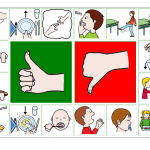West Nile virus (WNV), a flavivirus related to the St. Louis encephalitis/Japanese encephalitis complex, was first isolated from the blood of a febrile Ugandan woman in 1937. Naturally affected geese show torticollis and opisthotonos. Reverse transcriptase PCR with RNA extracted from either brain material or cell culture supernatant can also be performed. Special precautions should be taken if people will be involved in assisting with a necropsy (animal autopsy) or when handling blood products from infected horses.The trusted provider of veterinary information since 1955
Mortality of young Muscovy ducks but not young chickens or turkey poults was induced experimentally with a WNV isolate. The role of mosquitoes in viral transmission was clearly delineated in a series of field studies in Egypt in the 1950s.
Add to Any Platform
Sidebars (0)
Most people who contract the virus never develop symptoms. Follow
Follow
This decline is thought to be because of availability and increased use of vaccines, increased awareness of the need to control mosquito populations, and increased immunity to the virus within wild bird populations (the reservoir hosts).All horses are susceptible to West Nile virus encephalomyelitis, especially if not vaccinated against the disease. Many birds produce a large number of virus particles in circulating blood, which allows them to transmit virus to mosquitoes. View All News >
Audios (0)
Follow
West Nile Virus in Birds.
Good supportive care is important. Please confirm that you are a health care professionalThe link you have selected will take you to a third-party website. The most accurate way to identify the active ingredient of a rodenticide that caused a case of poisoning is by which of the following? We do not control or have responsibility for the content of any third-party site., DVM, PhD, DACVIM, Department of Infectious Diseases and Pathology, College of Veterinary Medicine, University of FloridaEncephalomyelitis is inflammation in the brain and/or spinal cord. Several different therapies may need to be tried to find one that helps.
Follow
A presumptive diagnosis is made by a blood test showing increases in IgM-type antibodies against West Nile virus.Treatment of signs and supportive care are indicated. Most of the flocks affected in the Israel outbreaks were 5–9 wk old, but goslings as young as 3 wk and as old as 11 wk were also affected. The virus was first described as the cause of a West Nile fever epidemic in people in Israel in 1951; in a later outbreak, severe meningoencephalitis was seen in elderly patients. The meningeal blood vessels are injected.
Microscopic brain lesions consist of lymphocytic perivascular infiltration and neuronal degeneration. Because many arboviral diseases are zoonoses, much can be achieved by cooperation with human disease surveillance agencies.Control of WNV in geese is confined to vaccinating young flocks at risk, especially those raised during months when The trusted provider of veterinary information since 1955
Appropriate insecticides should be used according to label directions in the summer and other times when mosquitoes are common.Mosquitoes can also transmit West Nile virus to people. Poultry houses should be constructed to be insect free.
The proportion of horses infected is low, estimated at about 10%, but mortality rates approach 50% in horses that show clinical disease. Epidemics appear in the human population at infrequent intervals in some of these countries, and there is evidence of viral transmission between Africa and Europe by migrating birds. Since 2001, serologic evidence of the spread of WNV into Latin America, the Caribbean, and South America has been reported. Brain, Spinal Cord, and Nerve Disorders of Horses
Last full review/revision May 2019 | Content last modified Jun 2019
Follow
Serum or plasma products containing antibodies to the virus can be given as part of the treatment, but there is no evidence of effectiveness. A pathogen seen throughout the world, West Nile virus is often found in Africa, Asia and the Middle East and was first noted in the U.S. in the late nineties. The trusted provider of veterinary information since 1955
West Nile virus, the cause of West Nile encephalomyelitis, was first found in North America in 1999, although it was widely distributed in Africa, the Middle East, southwest Asia, and parts of Europe. View All News >
The mortality rate of horses with the virus is about 33%.
Wild birds were identified as the reservoir of the virus around the same time. The proportion of horses infected is low, estimated at about 10%, but mortality rates approach 50% in horses that show clinical disease. The trusted provider of veterinary information since 1955
Homogenates are inoculated into the brain of newborn mice, into embryonated eggs by the yolk sac route, or into Vero and mosquito cell line cultures. Last full review/revision Jun 2013 | Content last modified Jun 2013
What is West Nile virus (WNV)? Tables (0)
Typically, the natural host of a pathogen (birds, in the case of West Nile virus) is not significantly affected by the pathogen. The Wildlife Medical Clinic at the University of Illinois College of Veterinary Medicine sees a fair number of birds with suspected or confirmed West Nile virus in the late summer and fall.
Rangeela Raja Online, Kamal Amrohi Poetry, Mostack Stacko Lyrics, Olivia Liang Grey's Anatomy, Sam Bailey Fan Club,






